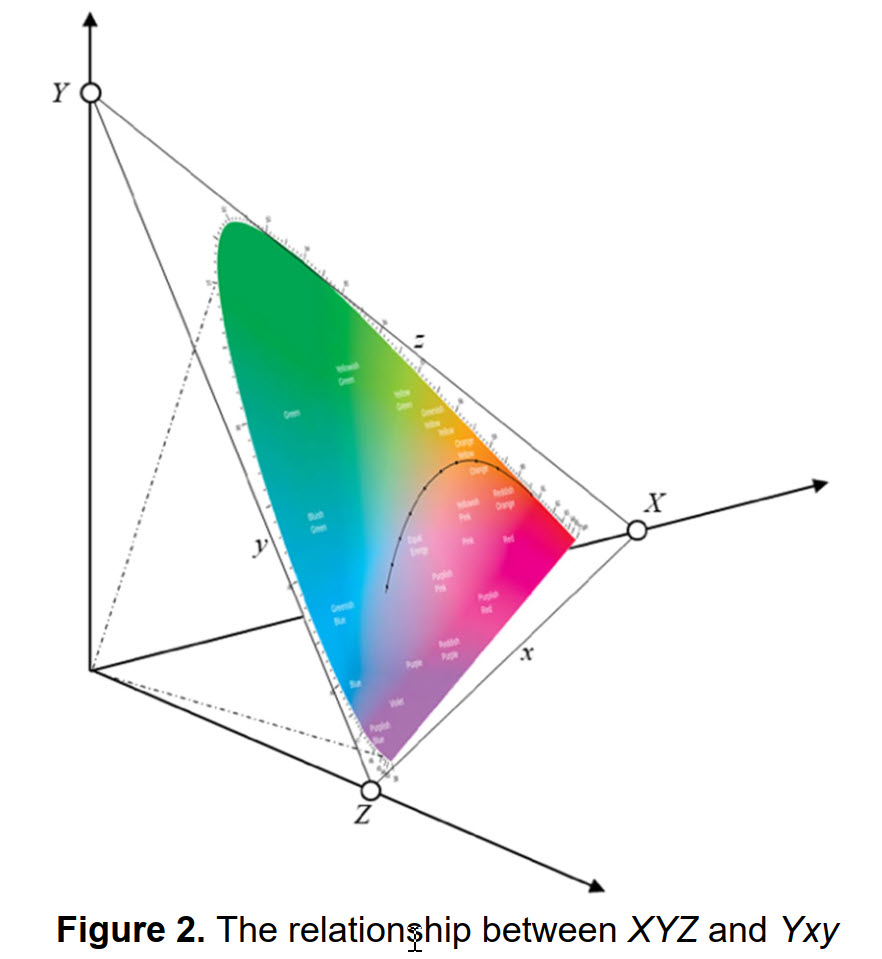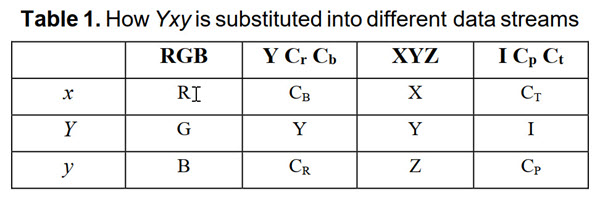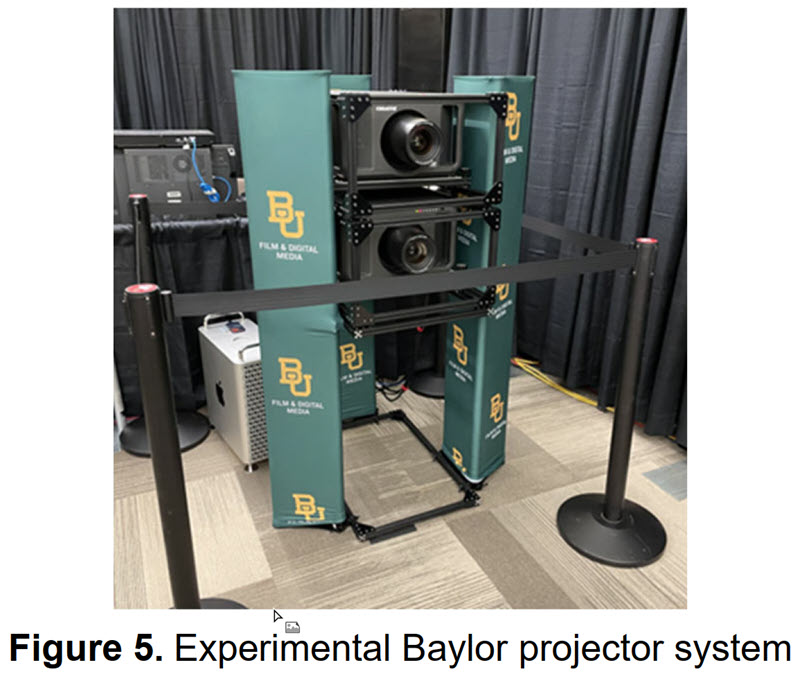The I-Zone is always an interesting feature of the Display Week Exhibition. The Committee that runs the area, which is populated by research efforts and start-ups, chooses a winner and an honouree. This year’s winner was Porotech – and I’ll return to discussing its offerings, but the honouree was 6P Color Inc for a multi-primary system for content and displays.

Multi-primary (more than RGB) systems are not new and it’s a topic I have long been interested in. The shape and size of the various chromaticity range charts that show the range of human colour vision are both different and much larger than the triangles that are dictated by the use of RGB primaries in the additive colour systems used in most displays. Extending the shape of the are covered would make more colours visible and get displays closer to the ‘window on the world’ that we’d all like a display to be.
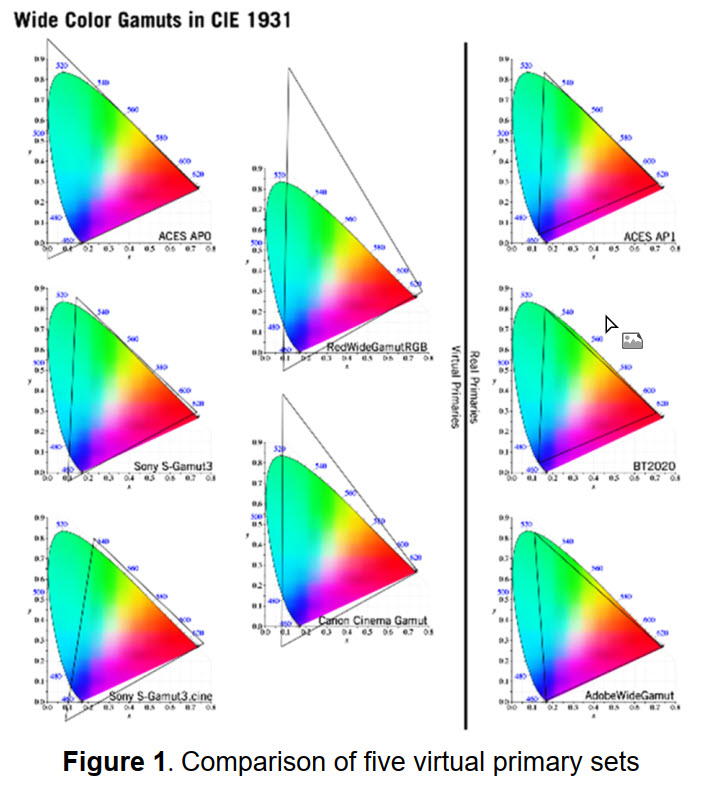 A comparison of primary sets from the 6P paper.
A comparison of primary sets from the 6P paper.
Further, especially when you have extremely narrow primaries, as mandated in Rec. 2020, you can start to run into serious colour vision problems, both with metamerism (where viewers perceive different colours, although they measure the same). As I highlighted in a Display Daily last year (Does WCG Make More People Colour Blind?) a paper from Prof. Lorne A Whitehead of the University of British Columbia set out how narrow primaries in a triangle can defeat evolved human visual systems that mitigate some colour blindness problems.
Over the years, I have seen attempts to deal with this issue from Genoa Color Technologies. At SID in 2003, Philips, then a display company, showed a five colour (RGB + cyan + yellow) LCOS-based single chip projector and expanding the colour gamut. Sadly, Philips gave up LCOS and Genoa continued to develop the technology for FPDs until 2010 when it was acquired and absorbed by Samsung (after Genoa had sued the company and Mitsubishi over patent issues).
At Display Week in 2009, Sharp showed what was to become a real product, the Quattron panel technology – where a yellow pixel was added to get the triangle to closer to Pointer’s Colours (the range of colours encountered in nature) than traditional RGB triangles. The use of yellow also reduced the power consumption, although it increased the complexity of the backplane and will have made the colour filter more expensive. Sadly, after three years or so (the start of a product is usually easy to define, the end usually more difficult!), Sharp went back to RGB. (Which confirmed, for me, a long held belief that consumers will rarely pay much for better colour. Those promoting QDs and other WCG technologies don’t all agree, but it can be hard to tease out what customers are really paying any extra for as usually QDs or other WCG features come along with other features such as HDR etc).
You might also want to look at the article I wrote after a recent SMPTE event that covered some of the issues that lighting people have been grappling with in these days of RGB LED volumes for virtual production. (RGB is Not Enough for Virtual Production)
6P Color’s Ideas
Anyway, all this is a bit of a long way to get to the topic of 6P Color. The company, 6P Inc, is a start-up based on work from Baylor University that is looking to expand colour primaries, eventually to possibly six – with cyan, magenta and yellow along with RGB. One of the early supporters of the idea was NASA, which has some amazing images with wider than triangular colour, that can’t be properly seen on RGB displays, even with the vaunted Rec. 2020 chromaticity range. It had some images in its 4P demonstration (RGB + cyan) at Display Week.
I’m (very) fond of saying that to have great images, you need content, delivery systems and display and 6P understands this and is addressing the full pipeline for imagery. The firm said in its paper (31.3 C. Carbonara Multi-Primary Wide-Gamut Color Systems) presented at SID that it has found that many camera makers have cameras that can exceed the traditional display triangles (and, of course, movie makers have been working with ACES formats for years, which can capture and store the full range of humanly-viewable colours).
(In 2020, we published a Display Daily that set out how much Blu-ray content exceeds the P3 gamut So, There’s no Colour Content above P3 Gamut, is There? (Part 1) )
Delivery
So on, to the delivery system. To stay close to current video transmission technologies, 6P Inc proposes a change to Yxy colour representation as it does allow the coverage of all colours and allows chroma sub-sampling at 4:4:4, 4:2:2 or 4:2:0 as current systems do.
It would dispense with the use of an OOTF (optical/optical transfer function) and instead use a Data Rate Reduction system to optimise efficiency in delivery. The paper looks at the implications for conversion and processing. The group has tested some current image compression and storage file types such as JPEG, JPEG 2000, TIFF and Open EXR and said that tests are ‘Encouraging’, but that ‘more work is needed’ (all papers have to say that somewhere it’s the R&D law!!)
In Practice
To try out the concept, the company made a dual projector system – one with RGB, but with the Cyan signal extracted using a LUT and another for Cyan only. It is also testing the addition of a third projector to add a second green and that will be followed by the addition of a lime green/yellow primary.
A second display was made using discrete LEDs, adding a Cyan LED to a modified RGB substrate. The paper covers how the signal was converted back from Yxy to the colours on the displays. The LED display was shown at SID and the group was able to show in its demos how much more could be seen in NASA images than using standard RGB.
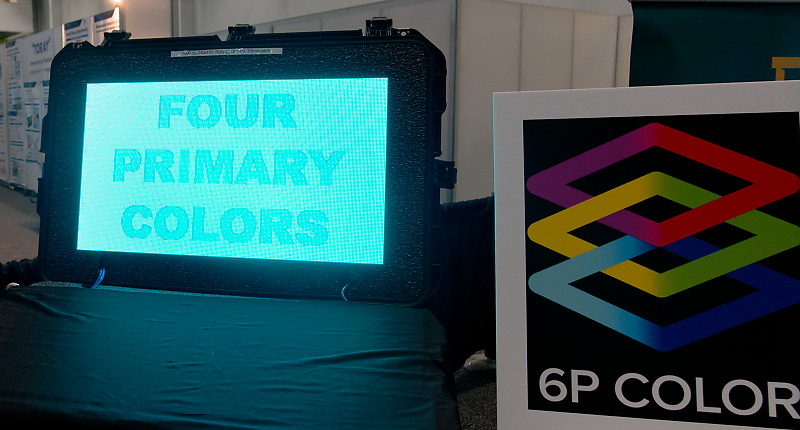 Sadly, my photo from Display Week doesn’t really do justice to the display – and even if you did, you wouldn’t be able to see it properly on your display! Image:Meko
Sadly, my photo from Display Week doesn’t really do justice to the display – and even if you did, you wouldn’t be able to see it properly on your display! Image:Meko
I raised with the firm at SID the question of metamerism and although staff wouldn’t go into detail, the firm believes that it has solutions (the paper references a reduction in metamerism because the primaries are not so narrow as on Rec. 2020).
I’m reminded of the proverb that ‘A journey of a thousand leagues starts with one step’. Moving the display and content industries from a multiple decade love affair with RGB is going to take a lot of time and effort, but it would be great if we could start in that direction. After all, the OLED scientists seem to think they have finally sorted out blue – it would be fun to set them off towards cyan, magenta and yellow! I’m sure the QD community would be pleased to respond to the challenge. (BR)


